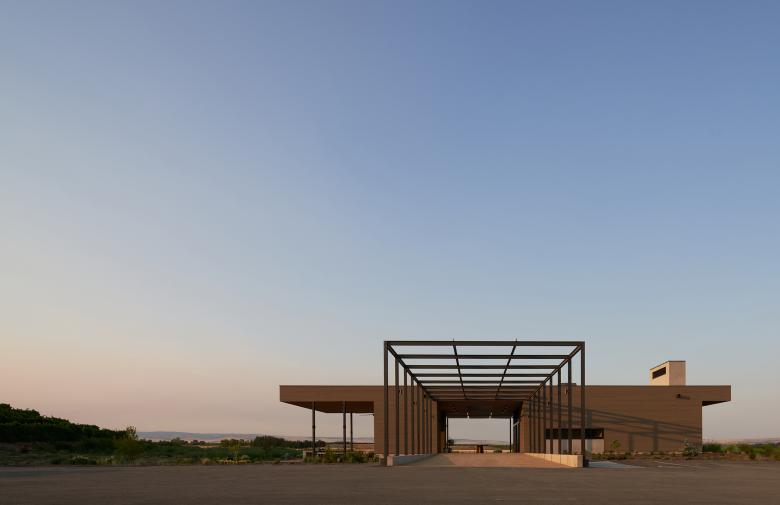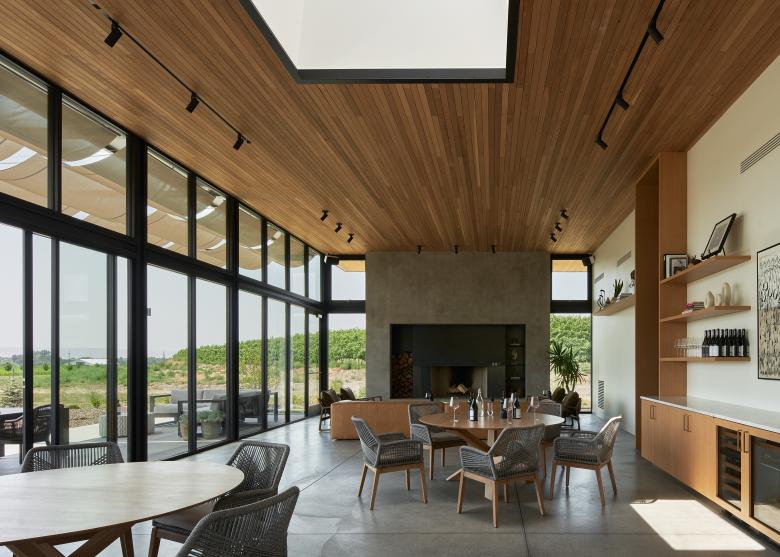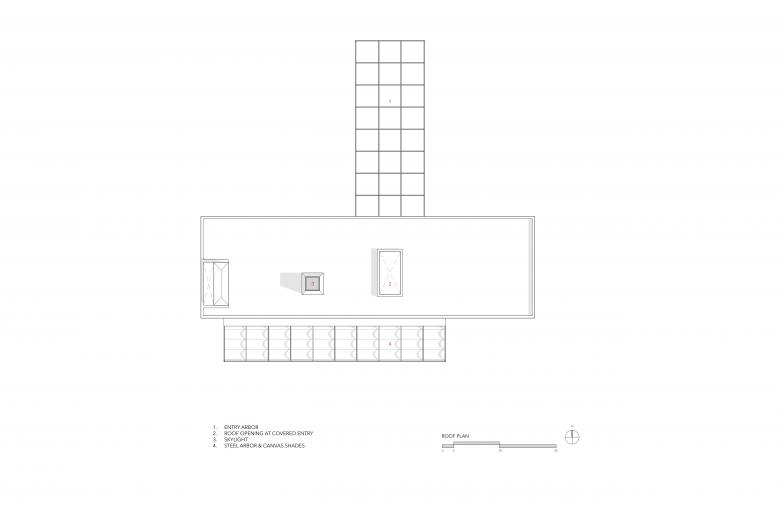US Building of the Week
Alton Wines
GO’C
14. 3月 2022
Photo: Kevin Scott
Wineries give architects the opportunity to engage directly with nature, often finding inspiration in the vineyards that surround them. Alton Wines takes its cues from the landscape it is nestled into and the mountains that surround Walla Walla in the southeastern region of Washington. Architect Jon Gentry of GO’C answered a few questions about the project.
Location: Walla Walla, Washington, USA
Client: Alton Wines
Architect: GO’C
- Design Principals: Jon Gentry and Aimée O’Carroll
- Project Team: Ashley Skidmore, Yuchen Qiu
Civil Engineer: Knutzen Engineering
Interior Designer: GO’C
Contractor: Mountain States Construction
Site Area: 11.97 acres
Building Area: 7,950 sf
Photo: Kevin Scott
What were the circumstances of receiving the commission for this project?The owners of Alton Wines approached us after visiting another winery project that we had completed in the Columbia River Gorge Area (COR Cellars).
Photo: Kevin Scott
Please provide an overview of the project.Inhabiting a wave-like landform just outside Walla Walla, Alton Wines nestles itself into an existing cove that is formed by the surrounding vineyards.The project consists of an indoor tasting room, wine garden, and several protected terraces allowing program to spill from inside to out. The building is focused on a connection to the landscape and views of the mountains.
Photo: Kevin Scott
What are the main ideas and inspirations influencing the design of the building?Focusing on the surrounding views, the architecture acts as a frame bringing the landscape closer into focus and a part of one's immediate experience. Upon arrival visitors to the winery are guided due south, on axis with the arbor leading to the Tasting Room and Wine Garden which orient east-west across the site. This dramatic approach captures and accentuates the view of the Blue Mountains seen through the terrace between the two buildings. The site offers stunning views to the south which are maximized as the building opens up to the fields beyond.
Photo: Kevin Scott
How does the design respond to the unique qualities of the site?The site itself is an untouched pocket amongst farm land. Deemed "unfarmable" due to the soil makeup and existing cove carved into the vineyards, the owner and farmer of the land had been waiting for the right opportunity to build something special. A design that is sensitive to the natural landscape was welcomed. We tucked the new structure into the existing cove, out of sight from the main road creating more privacy and a sense of discovery upon arrival.
Photo: Kevin Scott
How did the project change between the initial design stage and the completion of the building?At almost every turn in the design phases, we found more ways to engage the landscape and exterior covered spaces became more important to the design and to the owners as their program evolved. The exterior wine garden on a lower east terrace grew out of these design discussions.
Photo: Kevin Scott
Was the project influenced by any trends in energy-conservation, construction, or design?The concept and experience of tasting rooms especially in the Pacific Northwest has been something which has been evolving in recent years. The desire for Alton Wines was to move away from a traditional tasting room experience toward creating a space for people to linger and relax. The building needed to be flexible enough to allow the owners to host events and dinners which would go hand in hand with the wine and brand that they were curating. The tasting room is not simply about tasting wine, but about creating a tailored experience for the visitors.
Photo: Kevin Scott
What products or materials have contributed to the success of the completed building?A rigorous structural grid and framed openings is used throughout the building. Starting at the approach to the winery, steel bays form an arbor which will be planted with grape vines, creating much needed shade on summer days. This arbor structure passes through the building and forms the awning for the south terrace outside the tasting room. The repetitive structural grid allowed for an easier fabrication and install of the retractable canvas awnings over the south terrace. Sliding doors and windows infill this structural grid and enclose the tasting room. The structure is capped by a sheltering roof which is pierced by three elements--an anchoring chimney stack, an extruded skylight and a carved entry opening. These elements help to anchor the west end of the space and funnel natural light deep into the plan of the building and frame sky views throughout the seasons.
Email interview conducted by John Hill.
Photo: Kevin Scott
Important Manufacturers / Products:- Windows: Oldcastle BuildingEnvelope
- Sliding doors: Arcadia Inc.
- Skylights: Crystalite Inc.
- Fireplace: Isokern Magnum Series














